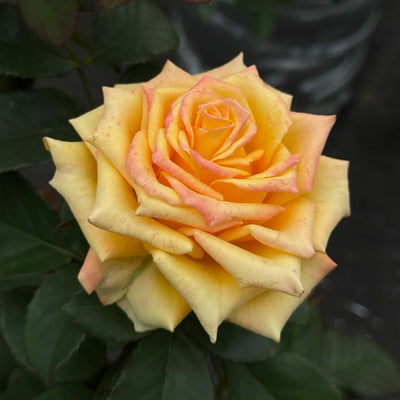🔥 Recommended Product
The Importance of Proper Fertilization for Healthy Roses: Preventing Diseases and Promoting Growth
Fertilizing your roses correctly is not only crucial for promoting healthy growth but also an essential strategy for preventing many common rose diseases. When used appropriately, fertilizers can help your roses stay strong, vibrant, and less susceptible to pests and diseases. With the right approach to fertilization, you can enjoy beautiful blooms without worrying about harmful insects and fungi.
Fertilization Frequency
To ensure your roses bloom continuously throughout the growing season, it’s recommended to fertilize every 4-6 weeks. Early spring typically requires just one application, but if your plants appear unhealthy, lack vibrant green color, or haven’t reached your expectations, you may need to increase the frequency of fertilization.
Here are some general principles for fertilizing your roses:
-
Watering Before and After Fertilization: Fertilizers, especially nitrogen, can burn plants if they are not watered properly. To avoid this, make sure the soil is moist before applying fertilizer. After fertilizing, watering again will help nutrients penetrate the root zone, ensuring better absorption and promoting plant health.
-
Fertilizing in Early Spring and Stopping Before Frost: Begin fertilizing in early spring, when the plants start to grow actively, or after removing winter protection in colder regions. This regular fertilization every 4-6 weeks should continue throughout the summer until about six weeks before the first frost (around late August or early September in colder climates). Continuing to fertilize too late into the fall can promote tender growth that may be damaged by frost, potentially reducing the rose's winter hardiness.
-
Soil pH and Nutrient Availability: Fertilizers will not work effectively if the soil pH is too high or too low. The wrong pH can prevent essential nutrients from being absorbed by the plant, even if they are present in the soil. Regular soil testing can help determine if adjustments to pH are necessary for optimal nutrient uptake.
-
Types of Fertilizers:
- Granular Fertilizers are easy to use, require no mixing, and are effective when applied correctly.
- Water-Soluble Fertilizers provide quick nutrient absorption and are ideal for potted roses. However, they often require more frequent applications.
- Slow-Release Fertilizers are convenient but may not provide the long-term nutrition roses need to thrive, so supplementing with granular fertilizers is often recommended.
Essential Nutrients for Roses
Proper fertilization should address both macronutrients and micronutrients that roses need for healthy growth:
-
Nitrogen (N): Nitrogen is key for promoting strong leaf growth and vibrant, deep green foliage. Healthy leaves are essential for flower production, as roses generate energy for blooming from their leaves. Nitrogen is typically the most abundant element in rose fertilizers, often far exceeding the levels of phosphorus and potassium. Don't be concerned if the nitrogen content seems high; it's necessary for leaf development. Avoid fertilizers that claim to be "flower-boosting" but lack nitrogen.
-
Phosphorus (P) and Potassium (K): These macronutrients are essential for rose health but should be used in moderation. Many soils already contain sufficient phosphorus and potassium for roses. Over-fertilizing with these elements may not provide additional benefits and can be wasteful. If you suspect a phosphorus deficiency, it’s best to apply some directly to the planting hole when establishing your rose bush.
-
Iron: Iron is crucial for maintaining healthy green leaves, especially in alkaline soils. A sign of iron deficiency is when the leaf veins remain green while the surrounding tissue turns yellow (a condition known as chlorosis). Applying an iron supplement to the soil can correct this deficiency.
-
Magnesium: Magnesium is essential for the production of chlorophyll, the compound responsible for photosynthesis. It also helps enhance flower color and promotes better flowering. If the soil is deficient in magnesium, it can be added as magnesium sulfate (Epsom salt). Typically, you should apply it once or twice a year, using about 1/4 to 1/2 cup per plant.
Conclusion
With proper and consistent fertilization, you can ensure that your roses thrive while staying healthy and resilient against pests and diseases. Pay attention to soil conditions, nutrients, and application frequency to provide your roses with the best possible care. Remember, the goal is not just to promote growth, but to build strong, disease-resistant plants that will reward you with beautiful blooms season after season.
Happy gardening, and may your roses bloom like never before!

















































